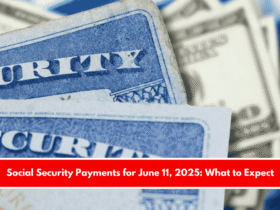A big change is coming in June 2025 for around 450,000 Americans who receive Social Security payments. The U.S. Department of Education has restarted efforts to recover unpaid student loans. This could result in lower monthly benefits for many people, especially those who have defaulted on their student loans.
These recoveries will be done through a method called a “clawback,” where part of a person’s Social Security income is taken to pay back their student loan debt. This action was paused during the COVID-19 pandemic, but it’s now starting again.
How Will I Know if My Payments Will Be Reduced?
If you’re affected, you’ll get a notification letter before any money is taken from your payments. The letter will explain how much you owe and what options you have to deal with it. These notices are legally required before any deduction happens.
There are a few ways to deal with your student loan situation. You can apply for loan rehabilitation or loan consolidation. In rare and extreme cases, you might consider bankruptcy, but there are strict rules for that.
Experts strongly recommend speaking with a lawyer or a Social Security specialist to understand what to do next. Dealing with this kind of debt can be complicated, and getting professional advice is the best way to protect your income.
What Benefits Are Covered Under Social Security?
Social Security isn’t just for retired people. It offers financial support in many situations:
Retirement Benefits
These are available after you’ve worked and paid into the system for at least 10 years. Payments can start at age 62, but if you wait until 70, you’ll receive the highest possible amount.
Disability Benefits (SSDI)
If you’re unable to work due to a health condition or accident, you might qualify for SSDI. These benefits can also extend to your spouse or children.

Survivor Benefits
If a worker dies, their spouse, children, or even parents may receive financial support. These benefits help the family continue to manage financially.
Supplemental Security Income (SSI)
This is for people with very low income and limited resources. It’s meant for elderly or disabled individuals who don’t qualify for regular Social Security benefits. SSI is a separate program but is managed by the same agency.
Payment Schedule for June 2025
Here’s when you can expect to get your Social Security payments in June 2025:
- June 3: If you started receiving benefits before May 1997
- June 11: If your birthday is between the 1st and 10th
- June 18: If your birthday is between the 11th and 20th
- June 25: If your birthday is after the 20th
This schedule follows the regular monthly system, with most people being paid based on their birthdate.
What Is the Maximum Benefit in 2025?
The amount you receive from Social Security depends on when you retire and how much you earned during your working years.
- At age 62: Up to $2,831 per month
- At full retirement age (66 years, 10 months): Up to $4,018 per month
- At age 70: Up to $4,873 per month
To receive the maximum amount, you must have worked for at least 35 years and earned at or above the taxable maximum income every year. For 2025, that limit is $176,100.











Leave a Reply